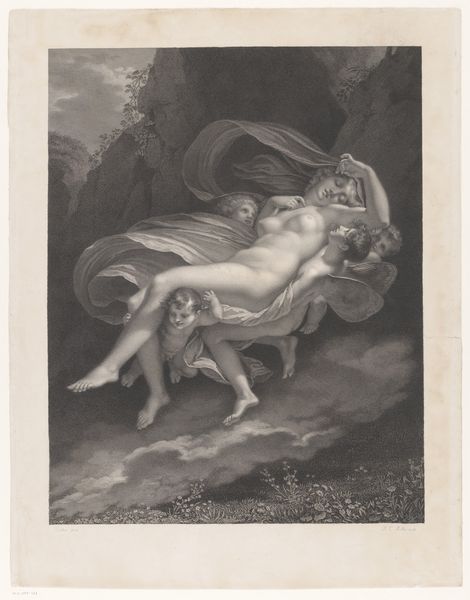
Dimensions: height 442 mm, width 547 mm
Copyright: Rijks Museum: Open Domain
Editor: This is Thomas Cook's "Jupiter en Semele," made around 1771 or 1772 using engraving techniques. There's this immediate sense of drama, right? A kind of divine power play mixed with, well, human vulnerability. It’s heavy, but compelling. What strikes you most about this piece? Curator: It plunges me right into the messy, gorgeous world of mythology, which I find to be irresistibly human despite its supposedly "divine" subjects. The story, the risk Semele takes, almost demands we ponder desire, consequence, and power, doesn't it? Look at the chiaroscuro; see how Cook uses light and shadow to carve out Jupiter’s dominance, while also rendering Semele as fragile as porcelain? Does the intensity translate, for you? Editor: Absolutely, the contrast really highlights their positions! I guess it's a Baroque thing, am I right? Is it just a trick of the eye, or does it look like there’s also charcoal maybe? Curator: Good eye! That atmospheric smokiness certainly adds a certain depth and, frankly, peril. Beyond the surface sheen, Cook teases the viewer. How can mortal eyes gaze on immortality and survive? The lines blur and buckle...almost like the image *itself* is breaking apart! It whispers: tread carefully when pursuing your desires. Don't you think? Editor: Definitely makes you think about ambition and the unknown, I'd say. Thanks, that was a very interesting view to it! Curator: My pleasure, every artwork contains the key for unlocking a piece of yourself. And for me, it’s never felt more appropriate than in this instance.
Comments
No comments
Be the first to comment and join the conversation on the ultimate creative platform.













